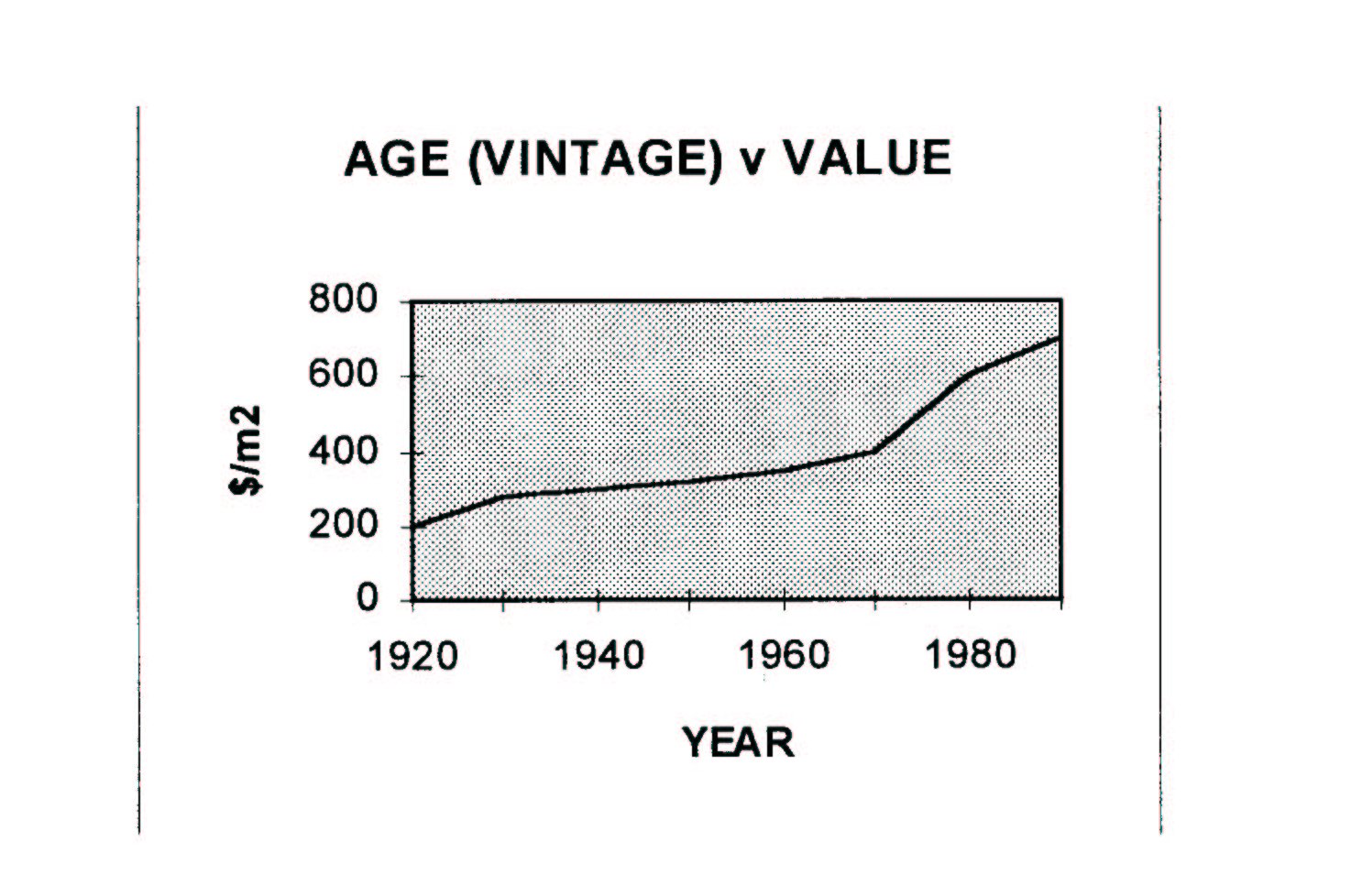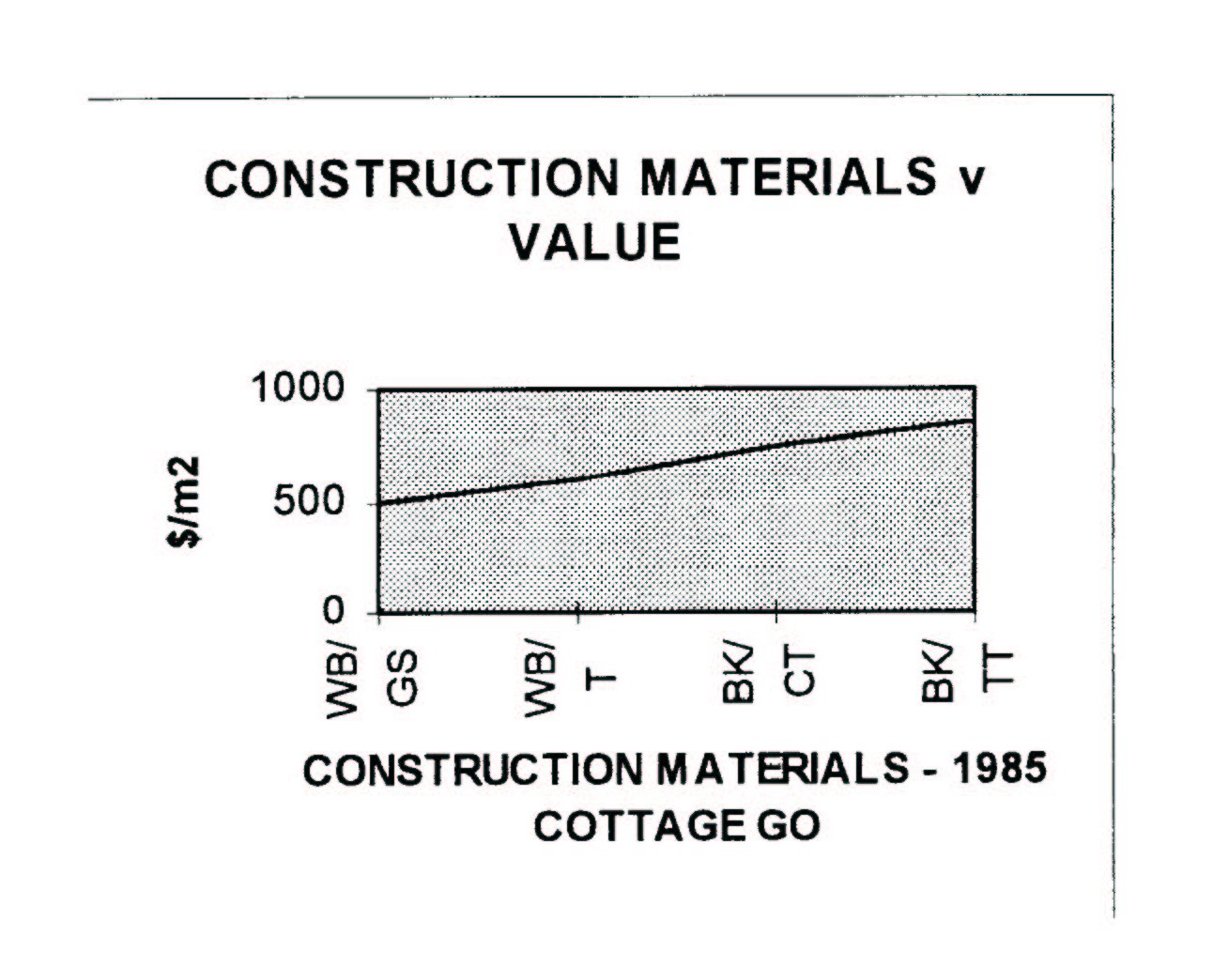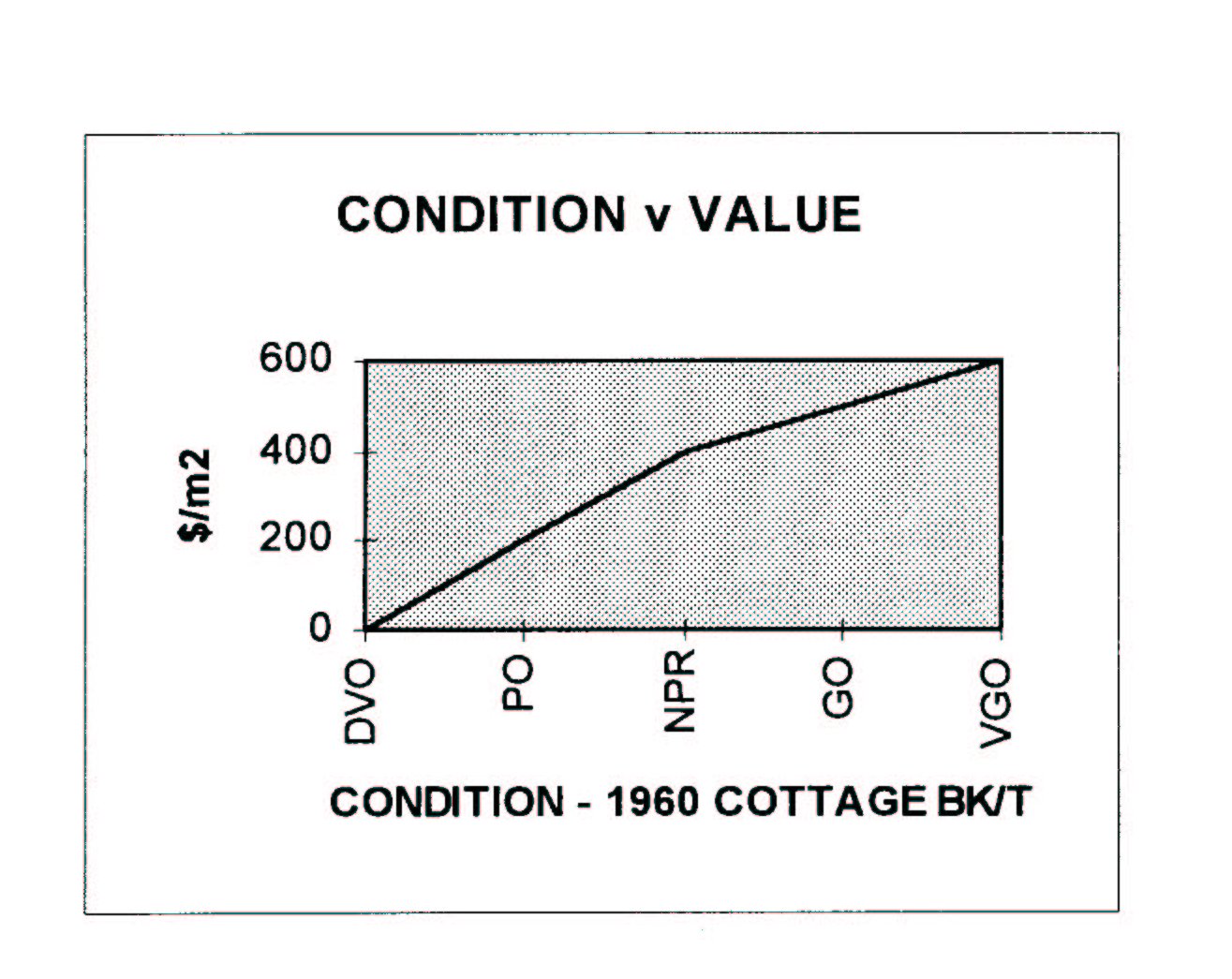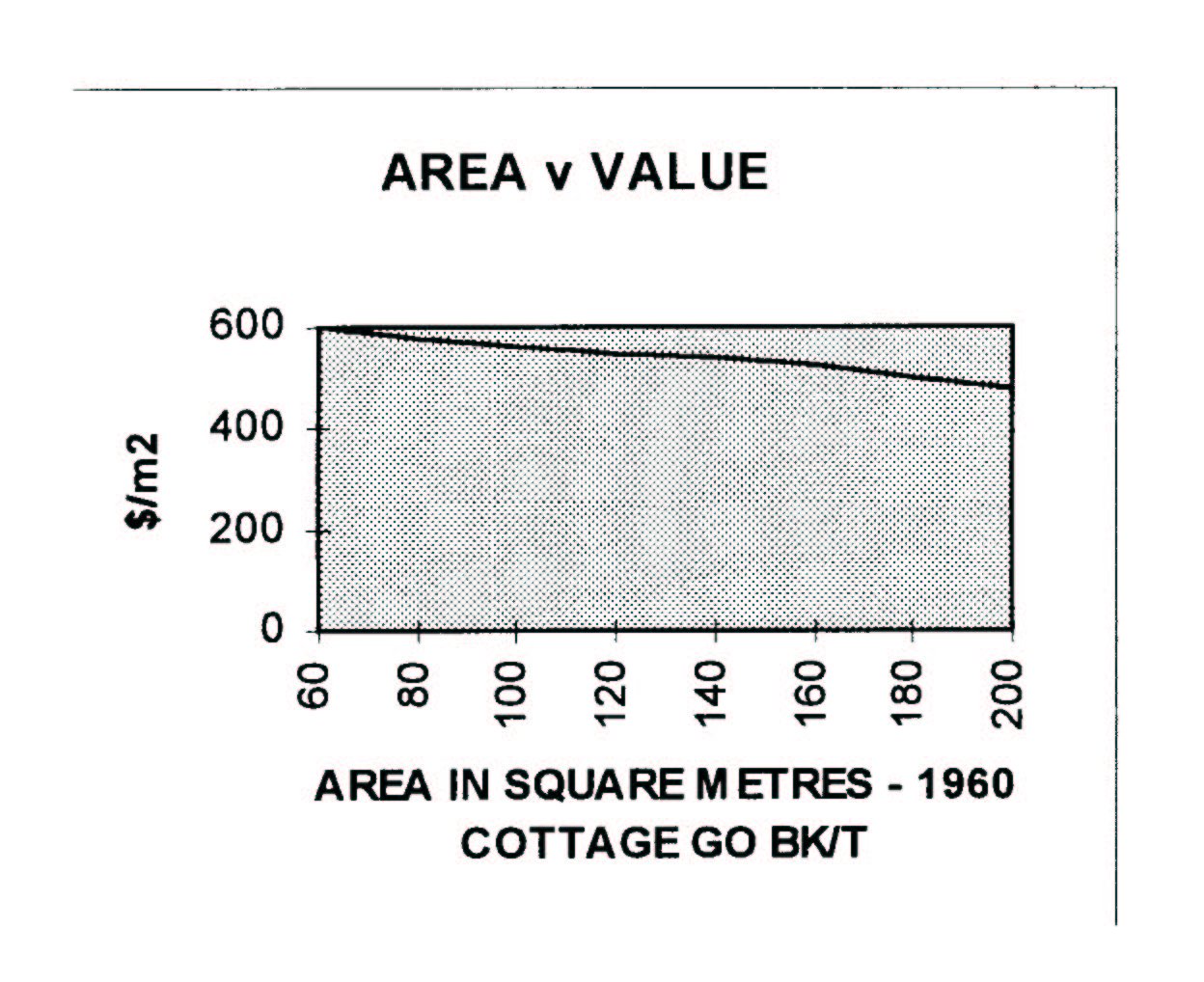METHODS
OF VALUATION
The
elements under the national standard are:
-
interpret
outcomes of analysis
-
analyse
data on subject property
-
determine
value
-
record
value, analytical approaches used and qualifications required.
INTERPRET
OUTCOMES OF ANALYSIS
"Value"
can be considered as consisting of two parts:
-
desirability
(the "D" factor)
-
utility
(the "U" factor).
This
breakup is shown in the attached diagrams against common land uses:
See
diagram showing high "u"
See
diagram showing high "d"
METHODS
OF VALUATION
The
amount or ratio of desirability determines the method of valuation
to utility in the total value. There are 3 fundamental methods of
valuation:
-
direct
comparison
-
summation
-
capitalization.
A
number of overseas textbooks list other methods, however they can be
included under one of the above headings. For example, cost and
residual methods come under the summation method in Australian
practice.
See
direct comparison
SELECTING
THE METHOD OF VALUATION
If
the direct comparison method is not suitable then either the
summation or the capitalization method is used. Which one?
If
desirability is the major eleme
nt then the summation method is used.
However, if utility is the major element, the capitalization method
is used. Generally, the appropriate methods are as follows:
-
a
single residential house: summation
-
a
home unit in a strata scheme where the majority are owner occupied: direct comparison.
-
a
home unit in a strata scheme where the majority are leased out as
investment properties: capitalisation.
-
investment
properties such as retail, commercial and industrial: capitalization.
In
this part we are concerned with the direct and summation methods.
See
summation method
See
capitalization method
See
primary and secondary methods
ANALYSE
DATA ON THE SUBJECT PROPERTY
SCALES
OF VALUE
Scales
of value are useful tables or graphs constructed from sale evidence
for the important variables determining market value for example, age
(architectural style), materials, condition, and size.
AGE
OF HOUSE
By
analyzing sales with the summation method the value/m2 of the
improvements against vintage is found. The values/m2 are plotted on a
graph for the subject house, in good order, with standard materials
and standard area. Such a graph is shown in the diagram below. The
value for an age other than that revealed by sales can be
interpolated from the graph.
DIAGRAM
AGE VERSUS VALUE
CONSTRUCTION
MATERIALS
The
diagram below shows a scale of values for brick/tile, wood/tile, and
wood/galvanized steel houses in which area, age and condition are
held constant. Values for vintage/materials not revealed by the sales
can be interpolated.
DIAGRAM
CONSTRUCTION MATERIALS VERSUS VALUE
CONDITION
The
diagram below shows a scale of values for very good order (VGO), good
order (G0), needs paint and repairs (NPR), and poor order (PO)
conditions. Materials, age and area are held constant.
DIAGRAM
CONDITION VERSUS VALUE
AREA
OF HOUSE
The
diagram below shows a scale of values for houses of 50,100, 200, and
400m2. Condition, age and materials are held constant. The value/m2
falls with an increase in area as fixed costs and expensive "one
of'" features (such as kitchens and bathrooms) are averaged over
a larger area.
See
multiple regression analysis
See
averaging
DETERMINING
THE VALUE OF BUILDINGS
Generally,
the most important variables that determine the value of residential
buildings are:
-
age
(vintage).
-
architecture
(style)
-
condition
-
finish
-
materials
of construction
-
structure
type
-
size
-
inclusions
- see above
-
ground
improvements - see above
AGE
(VINTAGE)
The
age of the building should be stated as vintage (year built) rather
than "x" years old. This Is because "x" years old
is relative to the date of the valuation report and therefore,
requires knowledge of that date. Further, it is more difficult for
the valuer to know and relate the date of construction with the style
and architecture of historical periods.
See
the table in the appendix that shows, as a general guide, the age
of buildings by the materials used.
Age
of buildings against materials used
ARCHITECTURE
(STYLE)
Architectural
style can be one of the most important variables of the market value
of houses particularly, in heritage areas. It is an example of "art'
being an important part of valuation system. Residential houses
should be classified and dated according to architectural periods for
example, art nouveau, art deco, modern, Californian Japanese, and
West Cost Bungalow. This is more important than the year of
construction .
Consumers
of housing have changing attitudes to architectural style and an
unpopular style today may be popular tomorrow.
EXAMPLE
Victorian
terraces in Sydney were particularly unpopular in the early 1900s
when it was considered desirable that houses should be freestanding.
Compare this attitude with their popularity today.
Classifications
of this nature should be constructed to suit a certain locality. For
example, what may be a good classification for the North Shore of
Sydney may be a poor classification for the inner suburbs of Sydney.
Residential
houses were constructed during distinct chronological periods, such
as the "immediate post war" period or the "depression
period". Subdivision of houses into historical periods is useful
as it reduces the number of categories needed and groups houses
together into similar design, architecture and materials.
See
appendix for a breakdown of architectural styles together with circa
based on that used by the South Australian Valuer General.
CONDITION
A
commonly used classification of a building's condition and a useful
fieldbook code is as follows:
DEMOLITION
VALUE ONLY (dvo):
The
building has no value
VERY
POOR (vp):
Needs
major structural
Improvement.
POOR
(p):
Needs
minor structural improvement.
NEEDS
PAINT AND REPAIRS (npr):
Painting
and non structural repairs are required.
NEEDS
PAINT (np):
Requires
painting only
FAIR
(f):
Reasonable
condition but will require painting soon.
GOOD
(g):
Recently
painted and/or renovated
VERY
GOOD (vg):
Above
average maintenance and condition. For example, well kept by one
owner.
Condition
relates to curable obsolescence until it falls to the level of
demolition value only. At that stage, it becomes incurably
obsolescent and the building has no value. Incurability reflects the
cost to cure. If substantial problems arise with the structural
integrity of the building (for example with the footings), although
cure is possible, it is too costly and the owner would be better off
demolishing and rebuilding.
FINISH
Finish
describes the extent and quality of items, workmanship, and attention
to detail in the house. It is measure of the quality of construction
(for example, Tallowwood, Tasmanian oak or Jarrah floors) as well as
the number and quality of prime cost (pc) items.
PC
items are those fixtures which are included at cost by the builder.
That is, in the building contract they are not separately costed as
the actual cost is not determined until date of purchase. This also
allows the owner some flexibility in the type, quality and extent of
PC items to be included in the house.
PC
items include:
-
bathtub
-
vanity
-
shower
suite
-
taps
-
door
furniture
-
toilet
suite
-
stove
-
kitchen
sink and laundry tub.
The
valuer can usually determine finish by the attention to detail. For
example, there is a rule of thumb that state; "if the front door
knob is expensive, then the finish for the rest of the house is also
of a high standard".
See
materials
STRUCTURE
The
structure of the house relates to the relative cost of construction
of the structural parts. The parts in descending order of value and a
popular code is as follows:
MAIN
(m):
The
main part of building under a full roof, fully lined and ceiled.
SKILLION
(s):
A
flat roofed addition (lean to) to the main part of the house. It may
or may not be fully lined and ceiled.
VERANDAH
(v):
An
open structure attached to the house. Generally, not lined and
ceiled.
PATIO
(p):
An
outside concrete slab attached to the building.
See
effective or equivalent area
LAND
Land
value is determined using the direct comparison method as shown above
or by analyzing the value from sales of houses using the summation
method. The main component of land value is whether or not a house
can be built on the land. Therefore, the extra or marginal value of
land over and above that value is less per square metre than the
basic building block.
Factors
affecting land value includes:
-
shape
(plottage)
-
slope
-
views
-
outlook
eg a northerly aspect
-
crossfall
-
inside
or corner block
-
high
side or low side of the the road
-
condition
of the road and access to the block.
See
analyzing values with the summation method
See
site value
See
replacement cost new (RCN) method
10




